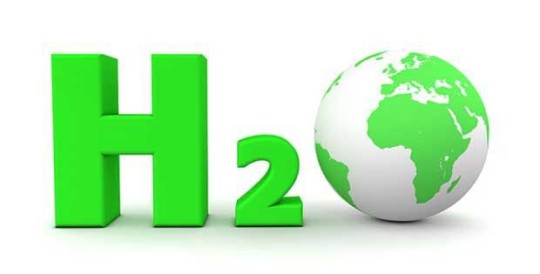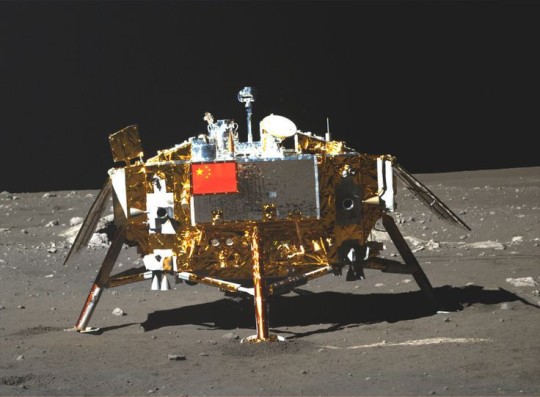Text
Hydrogen Fuel : A sustainable Energy.

Hydrogen is one possible answer for our dependence on the fossil fuels that power our cars and buses even though vehicles that use Hydrogen to spin their wheels have been on the market for years. The technology is still struggling to gain traction that could change in the near future as the European Union and other countries have committed to expanding their use of Green Hydrogen. Yes I specifically said Green Hydrogen because there are a couple ways of producing it and not all of them move us toward the goal of cutting down on greenhouse gas emissions.
Today the most common Hydrogen is known as gray Hydrogen and it's created from fossil fuels like in a process called steam methane reforming by combining Ultra Hot Steam with the Methane in Natural Gas and a catalyst the water Vapor and Methane react and produce Hydrogen Gas Carbon Monoxide and some Carbon Dioxide a second step called the Water Gas. Shift reaction uses the Carbon Monoxide steam and another catalyst to extract more Hydrogen Gas giving off CO2 as a waste product worldwide about 95% of our Hydrogen is gray.
I think the problem here is pretty obvious sure you can use Hydrogen in a fuel cell powered car and only give off water as a local waste product but if the Hydrogen was made through steam Methane reforming. You're just shifting your Carbon emissions from your tailpipe to a plant. Somewhere there is a way to make the process more Eco-friendly by capturing the CO2 and storing it. Or using it for other industrial applications and Hydrogen made this way is called Blue Hydrogen. Still what we're after is the good stuff the gilt free stuff the green stuff.

Hydrogen is the most abundant element in the universe it's found in this thing called water. Which you may have heard of Hydrogen can be pulled out of water using electricity in a process called electrolysis. Using electricity from Wind or Solar power could vastly cut down on how much Carbon Dioxide the whole process creates Hydrogen made. This way is you guessed it green Hydrogen of course there's a catch green Hydrogen is much more expensive to produce than gray or blue Hydrogen. While a kilogram of green gas goes for about six dollars today the gray stuff is priced at just a buck 60 per kilogram still the European Union imagines natural gas as an important tool for getting to net zero carbon emissions by 2050.

By improving electrolyzing machines and reducing the cost of renewable energy Green Hydrogen could compete with its gray counterpart as soon as 2030. Then it could be applied in transportation particularly for large vehicles like buses trucks and ships where the drawbacks of current batteries make them less than ideal but Hydrogen has potential far beyond trucks or boats. The EU has drawn up a road map of the and then transport it for use or storage somewhere else solving a big problem of renewables. Finally Hydrogen could be used in industrial processes to generate heat or replace coal based blast furnaces in steel production. Right now steel production is responsible for as much as 9% of Global Carbon Emissions. It all sounds very tempting tempting enough that the EU proposed investing billions of dollars in green Hydrogen separately the UK is ramping up their own use of Hydrogen with buses and trains powered by the technology just entering service in a few trial cities with reimagined transportation and a converted grid using Hydrogen from clean sources Europe could be a model for the world to follow.
#energy#science#education#technology#climate change#europe#renewable power#cars#fuel#beauty#celebrities#art
1 note
·
View note
Text
Graphene Could Help Us Build Bigger and Better Quantum Computers.

Quantum computers could be a massive technological leap forward, solving problems in seconds that would take “ordinary” supercomputers millennia to crunch.But one major problem holding them back is how sensitive they are to interference.Now, researchers in Finland claim they’ve created a crucial component that drastically cuts down on error-inducing noise,getting us closer to large-scale quantum computers.And what wonder-material was the key to this breakthrough? What else but graphene.You may have heard of quantum computers.But in case you’re new here, here’s a quick recap:Classical computers like the chip in your phone or laptop use electricity flowing through silicon switches to represent ones and zeroes.A single one or zero is called a bit.Quantum computers use quantum bits, or qubits, which can represent a one, a zero, or any combination of the two simultaneously.
This is thanks to the quantum phenomenon known as superposition.Another property, quantum entanglement, allows for qubits to be linked together,and changing the state of one qubit will also change the state of its entangled partner.Thanks to these two properties, quantum computers of a few dozen qubits can outperform massive supercomputers in certain very specific tasks.But there are several issues holding quantum computers back from solving the world’s toughest problems,one of them is how prone qubits are to error.Qubits are very sensitive to their surroundings, and it’s easy to accidentally cause a one to flip to a zero,or knock the qubit out of superposition and throw off the calculations.Two qubits interacting with each other have a pretty abysmal error rate of about 0.5%,meaning there’s one error for every two hundred operations or so.

By contrast, the silicon in your laptop makes a mistake once every 1017 operations.And as more qubits are added to the quantum circuit, the error rate goes up.There are many sources of error, one of which comes from measuring the energy state of the qubits themselves.Most quantum computers measure this using the voltage induced by the qubit, which requires a lot of power and circuitry to amplify the signal.To make matters worse, the voltage measurements carry noise that can throw off the readout.Aiming to tackle this problem, researchers in Finland set out to try a different approach.Instead of measuring voltage, the scientists tried using a detector called a bolometer.


The active element of a bolometer heats up when exposed to a tiny bit of radiation from a qubit and reflects some microwave radiation back.Measuring that change in radiation can also measure the energy state of the qubit, but with much less circuitry, power consumption, and noise.The team had previously made a bolometer with an active element made out of a gold-palladium alloy that demonstrated unprecedented low noise levels.But to be useful for quantum computing, a bolometer needs to detect small changes in energy quickly, and the gold-palladium alloy just wasn’t fast enough.
So the researchers turned to graphene, a lattice of carbon atoms just one atom thick.Graphene has a very low heat capacity, so it reacts to changes and takes measurements in under a microsecond.That’s 100 times faster than the previous gold-palladium bolometer and on par with the speed of current voltage detection technology, all while drastically cutting down on energy use, size, and error-inducing noise. So, big question time: is this the thing that finally does it?Are we there yet?Is the quantum dawn upon us?Man I hate being the downer at the end of every quantum computer video but, no, not yet.There are many, many hurdles yet to overcome.Solving the error rate is just one of them, and graphene bolometers may help... but like I said, there are many factors that cause errors.Still, that’s no reason to get discouraged.
The journey to quantum supercomputers is a long one and along the way there will be lots of discoveries, optimizations,and clever tricks that inch us forward.Graphene bolometers may not be the one thing that propels the technology from curiosity to world-changing,but every little qubit helps.Another breakthrough could be making qubits that don’t need to be supercooled.If you had a quantum computer, what would you use it for?

0 notes
Text
China's Chang'e 5 Will Collect Moon Rocks Nearly after 40 Years.

China is no stranger to lunar missions. Over the years, the country has sent a number of increasingly challenging missions to our natural satellite. The most famous of which, was the historic landing of the Chang’e 4 spacecraft on the moon’s far side in 2019. But this next launch is about to push the limits even further as Chang’e 5 is headed off to a previously unexplored lunar region. And this time, it’s bringing back a souvenir.This is all super exciting because the last time lunar samples were brought back to Earth was during the U.S. and Soviet missions in the 1960s and 1970s. And it’s perfect timing,because there’s now a renewed push for countries to focus on better understanding the moon’s evolution and even look for potential lunar activities such as mining or human colonies. And China is well prepared since it’s been developing two spacecraft for each of the three phases of its robotic lunar exploration program: orbiting, landing and finally, sample return.
And that’s where Chang’e 5 comes in. It’s China’s first lunar sample return mission and the spacecraft will contain four parts that make up the whole mission: an orbiter,
an ascender, a lander, and an Earth re-entry module. The orbiter will help place the spacecraft into the lunar... orbit. Once there, the lander and ascender will separate from the orbiter and land on the near side of the moon, an unexplored and vast, dark lava plain called Mons Rümker. After touching down, the lander will drill two meters below the surface, and
using a robotic arm, extract roughly two kilograms of lunar material. The sample will then be stored in the ascent module, which it will lift off to autonomously dock with the orbiter and transfer its sample to the return vehicle. From there, the return module will then separate to make the 5,000 km journey back to Earth, where it will re-enter the atmosphere for a parachute assisted landing.
So, that’s a lot of steps. Which means there’s a lot that could go wrong. But again, that’s what makes this mission so exciting because it’s all so very ambitious. And as if there wasn’t enough pressure already, time is of the essence. Unlike Chang’e 4 which is an ongoing mission, this latest endeavour is expected to complete its mission within one lunar day, or roughly 14 Earth days. That’s because come nightfall, the extreme temperature shift could jeopardize the spacecraft.
Originally scheduled to launch back in 2017, Chang’e 5 is now expected to take off on a Long March-5 rocket at the end of November 2020. And the team won’t have to wait long for the sample, since it’s expected to arrive back on Earth by early to mid-December.
But why exactly do we want these lunar samples? I mean we already have some from the Apollo era, why do we need any more? Well, it’s all about the moon’s evolutionary history.
The previous samples were taken from regions where the moon was believed to have stopped its volcanic activity some 3.5 billion years ago. But new theories believe that there could be some areas where lava could have formed more recently, like one to two billion years ago. And if the sample that Chang’e 5 collects proves that the moon was still geologically active at that time, it could change everything we know about the moon’s history. So no pressure, Chang’e 5.And if it doesn’t succeed, even more complicated backup missions are already in the works with Chang’e 6 and 7 planned for launch in 2023 or 2024. So with all these missions lined up, it’s just good practice for the biggest challenge of them all: sending humans to the moon.
Now, for that momentous occasion, China is looking towards the 2030s to accomplishthat feat, so in the meantime, a couple of practice runs will hopefully help get readyfor the big day.
1 note
·
View note